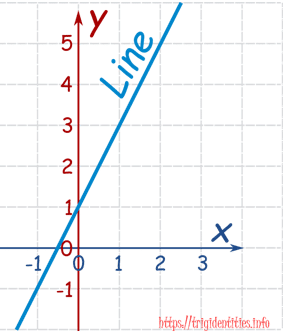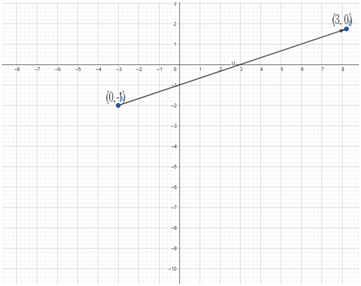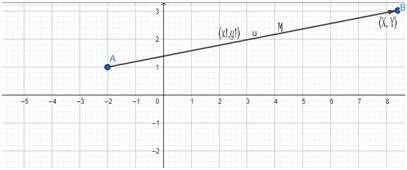Introduction to Linear Equation
Linear equation is an equation that “plots a straight line on graphs”.
Standard form of Linear equation is:
Ax + By = C
Where A, B, C are the numbers (Coefficients) and x and y are the variables.
Example
Ax + By = C
Just put numbers in above equation by replacing A, B and C.
- Y = 2x + 1.
- 2x + 3y=7.
- 5x = 6 +3y.
If x increases, y increases double as fast.
Steps for solving linear equations
- Expands the brackets.
- Change the order of terms so that all variables are on L.H.S of equations and all constants are on R.H.S of equations.
- Combine like terms
- Solve like terms
- Find the solution and write the answer
Example
Linear equation graph for y = 2 x + 1.
Example
Draw a Graph of a linear equation x-3y=3.
Step1:
X- 3y = 3 //equation 1.
⇒For solving y we assume that x=0.
Putting x=0 in equation 1.
0 – 3y=3
⇒-3y=3
⇒Y = – 1
Step 2:
For solving x we assume that y=0
X – 3 (0) = 3
X = 3.
Step 3: draw a straight line between x=3 and y=-1
Graph between x and y (3, 0) and (0,-1)
Draw a straight line through it.
Example solving on linear equations:
Example 1:
(1x + 2) / (x + 3) = 1
(1x + 2) =1 (2x+ 3)
⇒1x + 2 = 2x + 3
⇒X – 2x = 3 – 2(Shifting X to L.H.S and constants to R.H.S)
We get
⇒-1x = 1 (Dividing both side by 3 we get)
⇒Answer X= -1.
Example 2:
3x – 10 = 6x – 19
3x – 10 = 6x – 19
⇒ 3x – 6x = – 19 + 10 (shifting 6x to L.H.S and -10 to R.H.S)
⇒ 3x = 9
⇒ 3x/3 = 9/3 (Dividing both sides by 3)
Answer x = 3
Example 3:
Solve the value of x
5 (2x – 9) – 4x= 5 – 2x
⇒10x –45 – 4x = 5 – 2x
⇒10x -4x -2x =5 -45 (Shift all variables to L.H.S and all constants to R.H.S)
⇒4x = 40 (Dividing both side by 10)
Answer ⇒X= 10
Linear equation different form
There are many forms of linear equation but usually the equations have constant like 1, 2, 3…. & have simple variables like x-axis and y-axis.
Examples of non Linear equations
Linear functions have a constant slop while plotting on graphs it gives us straight line. While nonlinear functions have slop that varies between points.
⇒X2 – 4 = 0
⇒X2 /2 = 10
Linear Equation General Form
Ax + By + C = 0
Note:A and B can’t be zero at same time.
General form is not always useful.
Example
⇒4x + 2y + 4 = 0
Here
A = 4
B = 2
C = 4
Slop-intercept form
The equation slop intercept form is
Y=mx+b
Where“b” is the y-intercept and “m” is the slop of the points. Slop is always same if we change the order of operations.
Example 1
Y = -13 + 7x.
Step1
Y = -13 + 7x.
⇒For solving y value we Put x=0 we get
Y = – 13 + 7(0).
Y = – 13.
Step 2
For solving x we put y=0
⇒0= – 13 + 7x.
⇒13 = 7x(Dividing both side by 7)
X= 13/7
The slop interpret form of equation is (0, -13) and (13/7, 0).
Point slop form
The equation of a straight line of “Point-slop” is
Y – Y1 =m(X – X1)
Where X1 and Y 1 are given values and m is the slop of the line.
(X, y) are the unknown values.
Equations of point slop form
Where y1 and x1 is given m is slop of the equations and x and y is unknown values.
- Y – 2 = 2(x-3)
- y + 4= ½(x − 8)
- y + 4= 4(x + 10)


